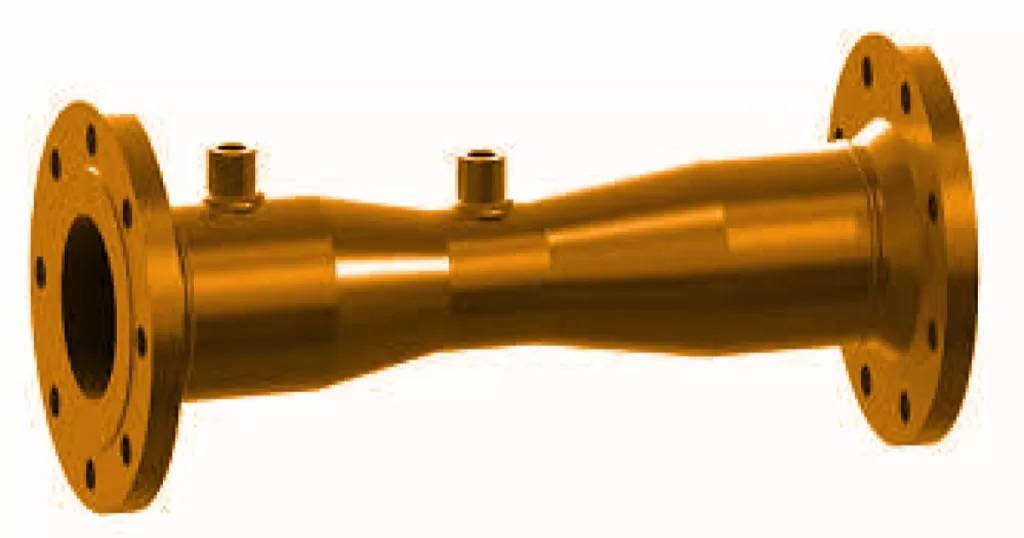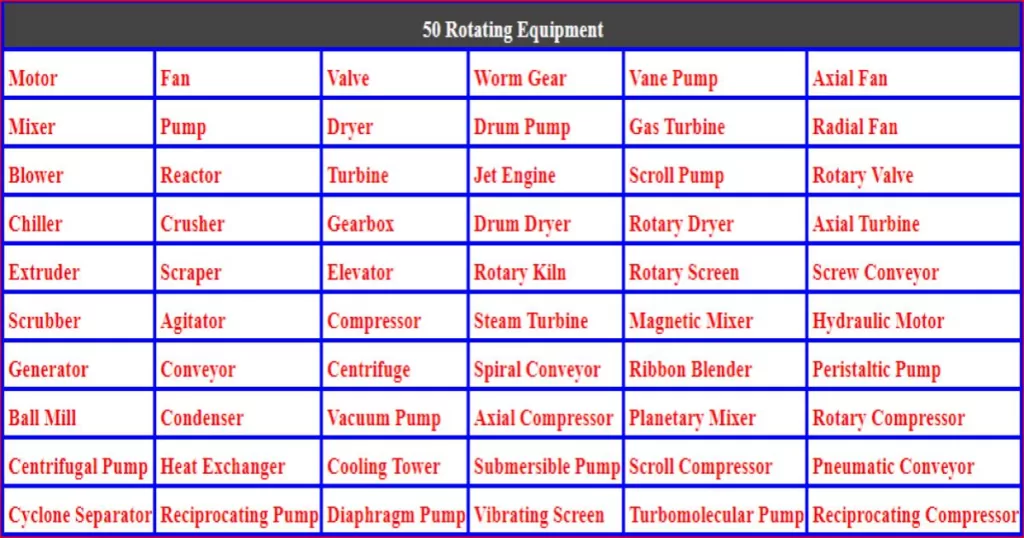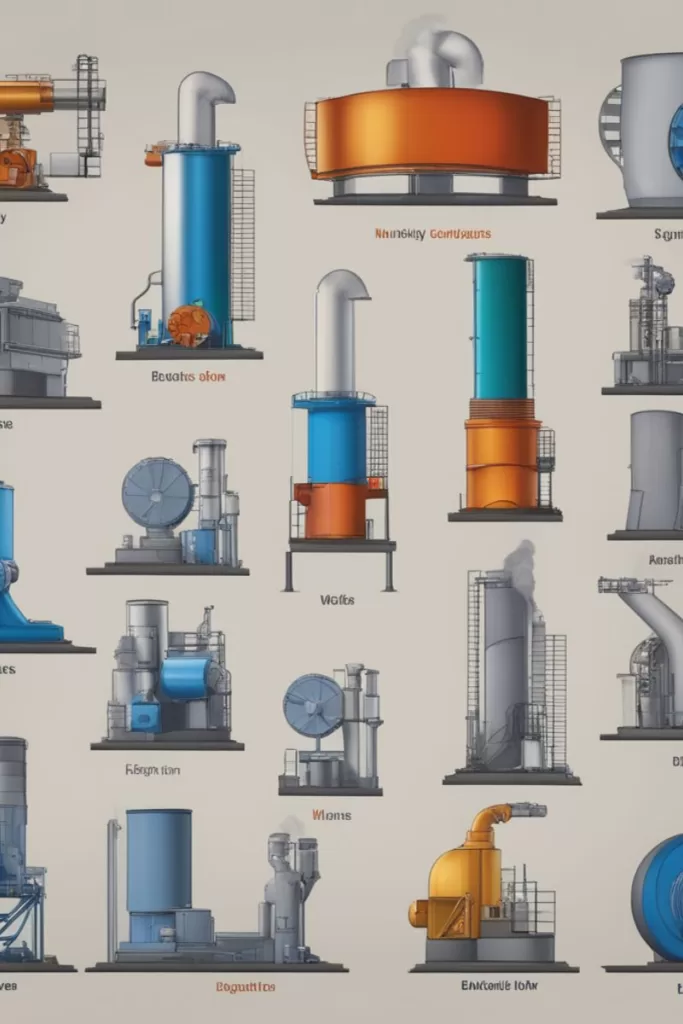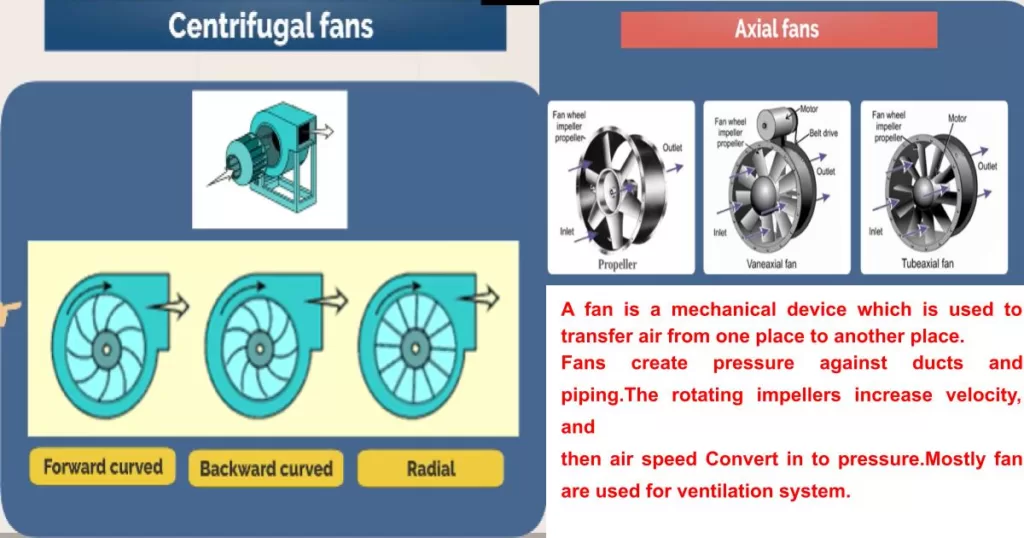Essential Static Equipment in Chemical Plants
You are welcome to our comprehensive guide on the basic static equipment required in chemical plants. Some chemical products play a vital role in ensuring permanent and clean water supply. From storage tanks and pressure vessels to medical equipment and reactors, this article covers over 50 pieces of equipment that are integral parts of chemical manufacturing processes.
Our goal is to provide a comprehensive and well-known source that is accessible to both insiders and people interested in the industry. While we are thinking about the evolution of our future, we are keeping in mind all the great vaporous stationary devices which should not exist in any chemical plant. So, join us together because we have introduced permanent equipment into the world in chemical plants and have discovered the only great source of energy in the production of substances that give shape to our world.

Importance of static equipment in chemical plants:
Static equipment is of utmost importance in chemical plants as they are designed to operate various processes and maintain products. Here are some of the main reasons that make static equipment important in chemical plants:
Types of static equipment
Here is a list of 50 static equipment in a table format with 3 rows:
| Static Equipment | ||
|---|---|---|
| Pressure Vessel | Heat Exchanger | Storage Tank |
| Distillation Column | Reactor | Separator |
| Absorber | Adsorber | Scrubber |
| Fin Fan Cooler | Deaerator | Accumulator |
| Steam Drum | Shell and Tube | Air Cooler |
| Condenser | Autoclave | Tray Dryer |
| Crystallizer | Cyclone | Evaporator |
| Flare Stack | Furnace | Jacketed Vessel |
| Knockout Drum | LPG Bullet | Packed Bed |
| Rotary Dryer | Silo | Sphere Tank |
| Static Mixer | Steam Generator | Surge Tank |
| Vacuum Drum | Bag Filter | Candle Filter |
| Electrostatic Precipitator | Sand Filter | Coalescer |
| Demister | Electrolyzer | Fixed Bed Reactor |
| Fluidized Bed Reactor | Freezer | Glass Lined Vessel |
| Nutsche Filter | Packed Column | Sparger |
| Static Heat Exchanger | Sublimator | Vacuum Flask |
| Venturi Scrubber | Wire Mesh Demister |
Introduction to Static Equipment in Chemical Plants:
Static equipment plays a pivotal role in chemical plants, serving as essential components that facilitate various chemical processes. These equipment are designed to handle high pressures, temperatures, and specific conditions necessary for chemical reactions, separations, and storage. Among the crucial static equipment in chemical plants are Pressure Vessels, Heat Exchangers, Storage Tanks, Distillation Columns, Reactors, Separators, Absorbers, Adsorbers, Scrubbers, Fin Fan Coolers, Deaerators, and Accumulators.
Download PDF File here
Types of Static Equipment:
Pressure Vessel | Heat Exchanger and Storage Tank
Pressure Vessel: Pressure vessels are containers designed to hold gases or liquids at a pressure substantially different from the ambient pressure. They are crucial for processes requiring containment under high pressure, such as chemical reactions, heat transfer, and storage.
Heat Exchanger: Heat exchangers are devices designed to transfer heat between two or more fluids, ensuring efficient temperature control in various chemical processes. Types include shell-and-tube, plate, and fin-fan heat exchangers, each suited for specific applications.
Storage Tank: Storage tanks are large containers used for storing liquids, gases, or chemicals. They are vital for holding raw materials, intermediates, or final products in a safe and organized manner.
Distillation Column Reactor and Separator
Distillation Column: Distillation columns are used for separating components of a liquid mixture based on their different boiling points. They are crucial for processes like refining and chemical synthesis.
Reactor: Reactors are vessels where chemical reactions take place. They are designed to withstand the conditions required for specific reactions, facilitating the transformation of raw materials into desired products.
Separator: Separators are devices used to separate different components of a mixture, such as gases and liquids or liquids with different densities. They play a crucial role in refining and processing operations.
Absorber | Adsorber | Scrubber and Fin Fan Cooler
Absorber: Absorbers are units designed to absorb one or more components of a gas mixture into a liquid phase. They are commonly used for removing impurities from gases.
Adsorber: Adsorbers are used for adsorption, a process where molecules adhere to the surface of a solid material. They find applications in purification and separation processes.
Scrubber: Scrubbers are devices used to remove pollutants from industrial exhaust gases. They help in minimizing environmental impact by controlling emissions.
Fin Fan Cooler: Fin Fan Coolers are heat exchangers equipped with fans to cool process fluids. They are employed in various industries to maintain optimal temperatures in different stages of chemical processes.
Deaerator | Accumulator | Steam Drum | Shell and Tube Air Cooler
Deaerator: Deaerators are used to remove dissolved gases, such as oxygen and carbon dioxide, from feedwater. They are essential in preventing corrosion in boilers and improving overall system efficiency.
Accumulator: Accumulators are pressure vessels that store fluid under pressure. They provide additional fluid when needed, ensuring a stable and consistent supply during peak demand periods.
Steam Drum: The steam drum is a vital component in steam-based processes, serving as a reservoir for steam-water mixture. It is an essential part of boilers and steam generation systems, ensuring the separation of steam from water for efficient energy transfer.
Shell and Tube Heat Exchanger: This type of heat exchanger is widely employed in chemical processes for efficient heat transfer between two fluids. The shell and tube design facilitates heat exchange, making it suitable for various applications, including cooling or heating processes.
Air Cooler: Air coolers, also known as fin-fan coolers, are utilized to dissipate heat from process fluids by using ambient air. These are crucial in maintaining optimal temperatures in chemical processes where cooling is required, offering an energy-efficient alternative to water-based cooling systems.
Condenser | Autoclave | Tray Dryer | Crystallizer and Cyclone
Condenser: Condensers play a crucial role in transforming vaporous substances into liquid form by removing heat. In chemical plants, condensers are commonly used to condense vapors generated during different processes, aiding in the recovery and reuse of valuable substances.
Autoclave: Autoclaves are pressure vessels designed to withstand high pressure and temperature. They are used for various chemical processes, including polymerization and curing, where controlled conditions are necessary for reactions to occur effectively.
Tray Dryer: Tray dryers are employed for drying solid materials in batches. These static units consist of trays stacked one above the other, allowing for efficient drying through the circulation of hot air. Tray dryers find application in processes requiring careful control of temperature and drying time.
Crystallizer: Crystallizers are equipment used in the formation of crystals from a solution. In chemical plants, crystallization is often employed to separate and purify solid products from liquid solutions, essential in industries such as pharmaceuticals and chemicals.
Cyclone: Cyclones are devices used for separating particulate matter from gas streams through centrifugal force. Widely applied in pollution control and material recovery, cyclones are effective in removing solid particles from gas streams in chemical processes.
Evaporator | Flare Stack | Furnace | Jacketed and Jacketed Vessel
Evaporator: Evaporators are employed to concentrate solutions by removing the solvent, typically water. They find applications in industries like food processing and chemicals, playing a vital role in the production of concentrated liquid products.
Flare Stack: Flare stacks are safety devices used for the controlled burning of excess or unwanted gases to prevent the release of potentially harmful substances into the atmosphere. They are crucial for maintaining safety in chemical plants.
Furnace: Furnaces are heat-treating units used for various purposes, including combustion, heating, and drying. In chemical plants, furnaces play a key role in processes requiring high temperatures, such as the production of certain chemicals and materials.
Jacketed Vessel: Jacketed vessels are containers with an outer shell designed to circulate heating or cooling media to control the temperature of the contents. These vessels are commonly used in processes requiring precise temperature control, such as reactions that are temperature-sensitive.
Knockout Drum | LPG Bullet | Packed Bed | Rotary Dryer | Silo and Sphere Tank
Knockout Drum: Knockout drums are separators designed to remove liquids from gas streams. In chemical plants, they play a crucial role in preventing liquid carryover in gas transportation systems, ensuring the purity and efficiency of gas-based processes.
LPG Bullet: LPG bullets are large, horizontal pressure vessels used for storing liquefied petroleum gas (LPG). These vessels are essential in ensuring the safe storage and controlled release of LPG, which is widely used in various industrial and domestic applications.
Packed Bed: Packed beds are columns filled with a packing material, such as catalysts or adsorbents, used in chemical processes for reactions or separation. They provide a large surface area for interactions between gases and liquids, facilitating efficient mass transfer.
Rotary Dryer: A Rotary Dryer is a vital static equipment used in chemical plants to efficiently remove moisture from solids. It operates by rotating a drum and exposing the material to hot gases, ensuring thorough drying before further processing.
Silo: Silos are storage structures designed to store bulk materials such as grains, powders, and chemicals. They play a crucial role in managing inventory and ensuring a steady supply of materials for ongoing production processes.
Sphere Tank: Sphere Tanks are pressure vessels with a spherical shape, providing optimal strength to contain gases under pressure. They find applications in storing liquefied gases and ensuring safety in handling volatile substances.
Static Mixer | Steam Generator | Surge Tank | Vacuum Drum |Bag Filter and Candle Filter
Static Mixer: Static Mixers are used to homogenize fluids or gases within a pipeline without the need for mechanical parts. They enhance mixing efficiency in various processes, contributing to the uniformity of chemical reactions.
Steam Generator: Steam Generators produce steam by utilizing heat energy, and they are integral in providing steam for various industrial processes, including heating, power generation, and chemical reactions.
Surge Tank: Surge Tanks act as buffer reservoirs to absorb sudden changes in fluid flow, preventing pressure fluctuations and ensuring a stable flow in the system. They play a vital role in maintaining process stability.
Vacuum Drum: Vacuum Drums create and maintain a vacuum for specific processes, such as distillation. They facilitate the separation of components by reducing the boiling points of substances, aiding in the purification of products.
Bag Filter: Bag Filters are employed for air or gas filtration, capturing particulate matter and impurities. They are crucial in maintaining air quality and preventing contaminants from entering sensitive equipment or the environment.
Candle Filter: Candle Filters are specialized filters designed for liquid filtration applications. They use a cylindrical arrangement of filter candles to separate solids from liquids in various chemical processes.
Electrostatic Precipitator | Sand Filter | Coalescer and Demister | Electrolyzer
Electrostatic Precipitator: Electrostatic Precipitators remove particulate matter from exhaust gases by using electrostatic forces. They are employed in air pollution control systems to ensure clean emissions.
Sand Filter: Sand Filters are used for water and wastewater treatment, effectively removing suspended particles from liquids. They play a vital role in maintaining the quality of process water in chemical plants.
Coalescer: Coalescers are static devices designed to merge small droplets of liquids into larger ones, aiding in the separation of immiscible liquids. They are crucial in processes where liquid-liquid separation is required.
Demister: Demisters, also known as mist eliminators, are used to remove entrained droplets from gas streams. They ensure that only dry gas exits the system, preventing moisture-related issues.
Electrolyzer: Electrolyzers are static equipment used in electrolysis processes to produce hydrogen and oxygen from water. They find applications in industries where on-site gas generation is required.
Fixed Bed Reactor | Fluidized Bed Reactor | Freezer and Glass Lined Vessel
Fluidized Bed Reactor: A Fluidized Bed Reactor is a type of chemical reactor where a bed of solid particles is suspended and behaves like a fluid due to the upward flow of gas or liquid. This unique design enhances heat and mass transfer, making it suitable for various chemical processes, including catalytic reactions and combustion.
Freezer: A Freezer is an essential piece of equipment used in industries like food processing, pharmaceuticals, and research. Its primary function is to lower the temperature of a substance, usually to freezing or below, preserving food, pharmaceuticals, or biological samples.
Glass Lined Vessel: A Glass Lined Vessel is a container with a glass layer on its internal surface. This glass lining provides resistance against corrosion from reactive chemicals, making it suitable for handling corrosive substances in chemical processes.
Nutsche | Filter | Packed Column | Sparger | Static Heat Exchanger and Sublimator
Nutsche Filter: A Nutsche Filter is a filtration system commonly used in pharmaceutical and chemical industries. It consists of a cylindrical vessel with a perforated plate at the bottom, allowing the separation of solids and liquids. It is particularly useful for batch processes.
Packed Column: A Packed Column is a vertical vessel filled with packing material used for separating and purifying liquid-vapor mixtures through distillation, absorption, or stripping processes. The packed column provides a large surface area for mass transfer.
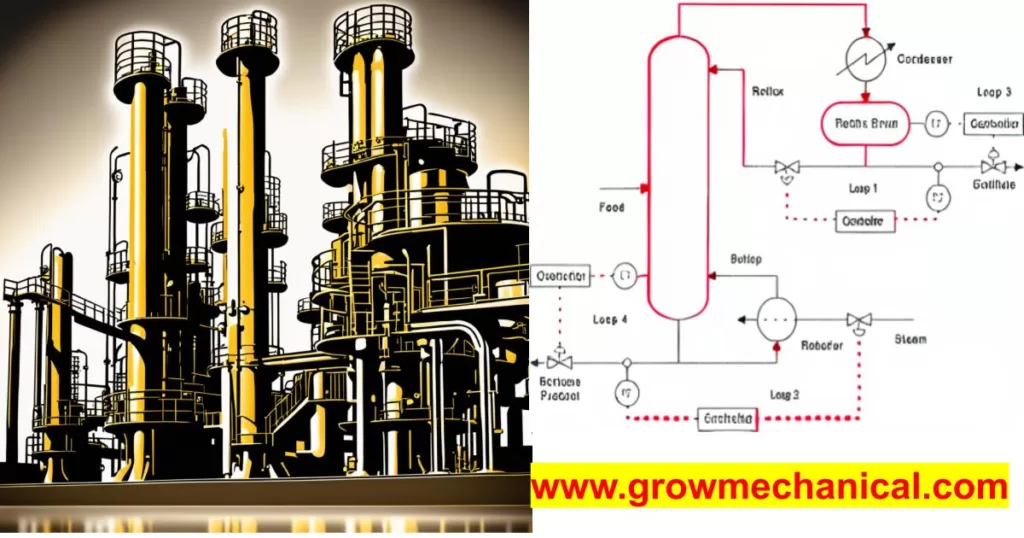
Sparger: A Sparger is a device used to introduce gases into a liquid. It is commonly employed in chemical reactors and fermentation processes to enhance mass transfer and promote chemical reactions by dispersing gas bubbles into the liquid.
Static Heat Exchanger: A Static Heat Exchanger is a type of heat transfer equipment that allows the exchange of heat between two fluids without any moving parts. It is crucial for maintaining specific temperatures in chemical processes.
Sublimator: A Sublimator is a device that facilitates the process of sublimation, where a substance transitions directly from a solid to a gaseous state without passing through the liquid phase. Sublimators find applications in various industries, including pharmaceuticals and freeze-drying processes.
Vacuum Flask | Venturi Scrubber and Wire Mesh Demister
Vacuum Flask: A Vacuum Flask, also known as a Dewar flask, is a container designed to keep its contents at a stable temperature by minimizing heat transfer. It consists of an inner and outer flask with a vacuum between them, preventing heat exchange with the external environment.
Venturi Scrubber: A Venturi Scrubber is an air pollution control device used to remove particulate matter and gases from industrial exhaust streams. It operates on the principle of creating a high-velocity gas stream to capture and remove pollutants through impaction and absorption.
Wire Mesh Demister: A Wire Mesh Demister is a device used to remove liquid droplets from gas streams. It typically consists of layers of mesh pads that allow gas to pass through while capturing and coalescing liquid droplets, preventing them from escaping with the gas stream.
